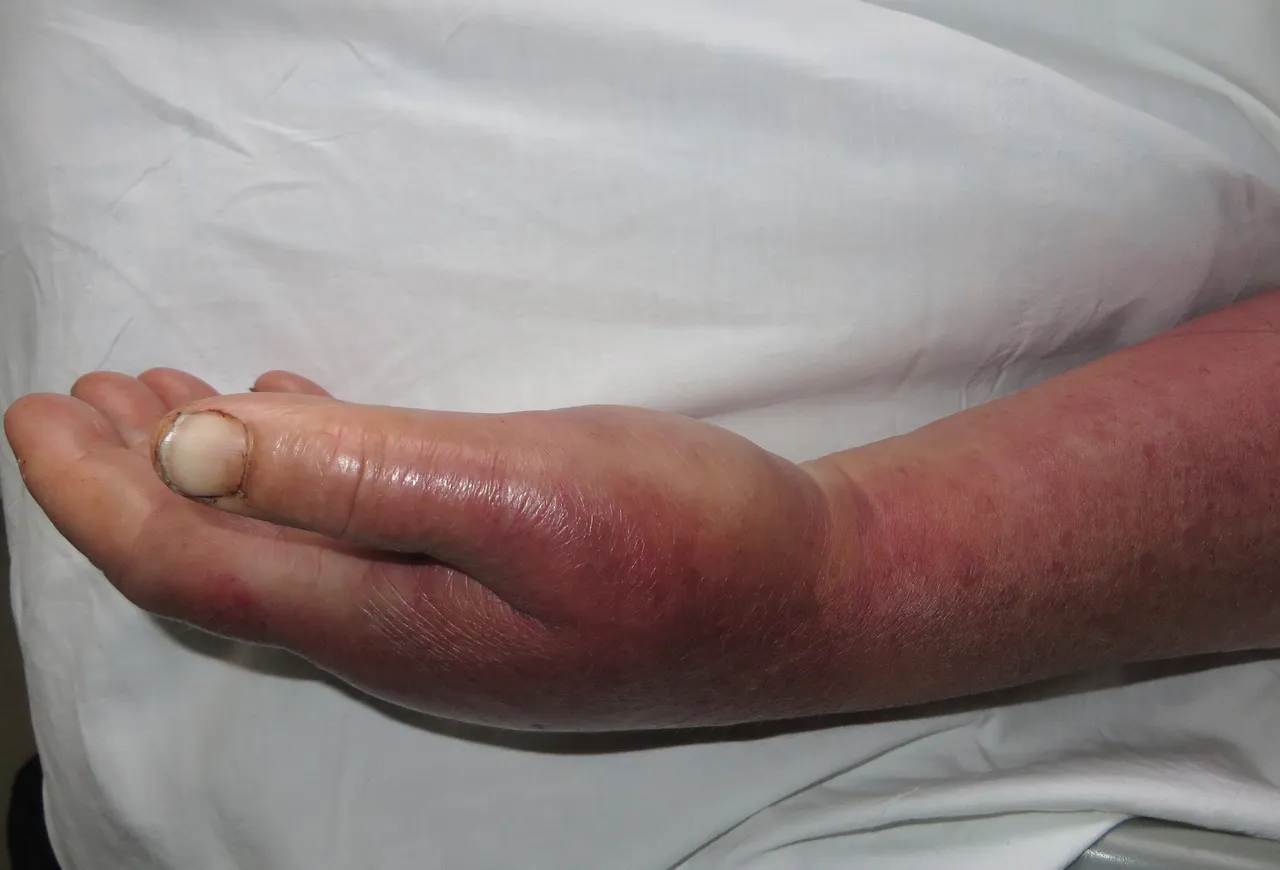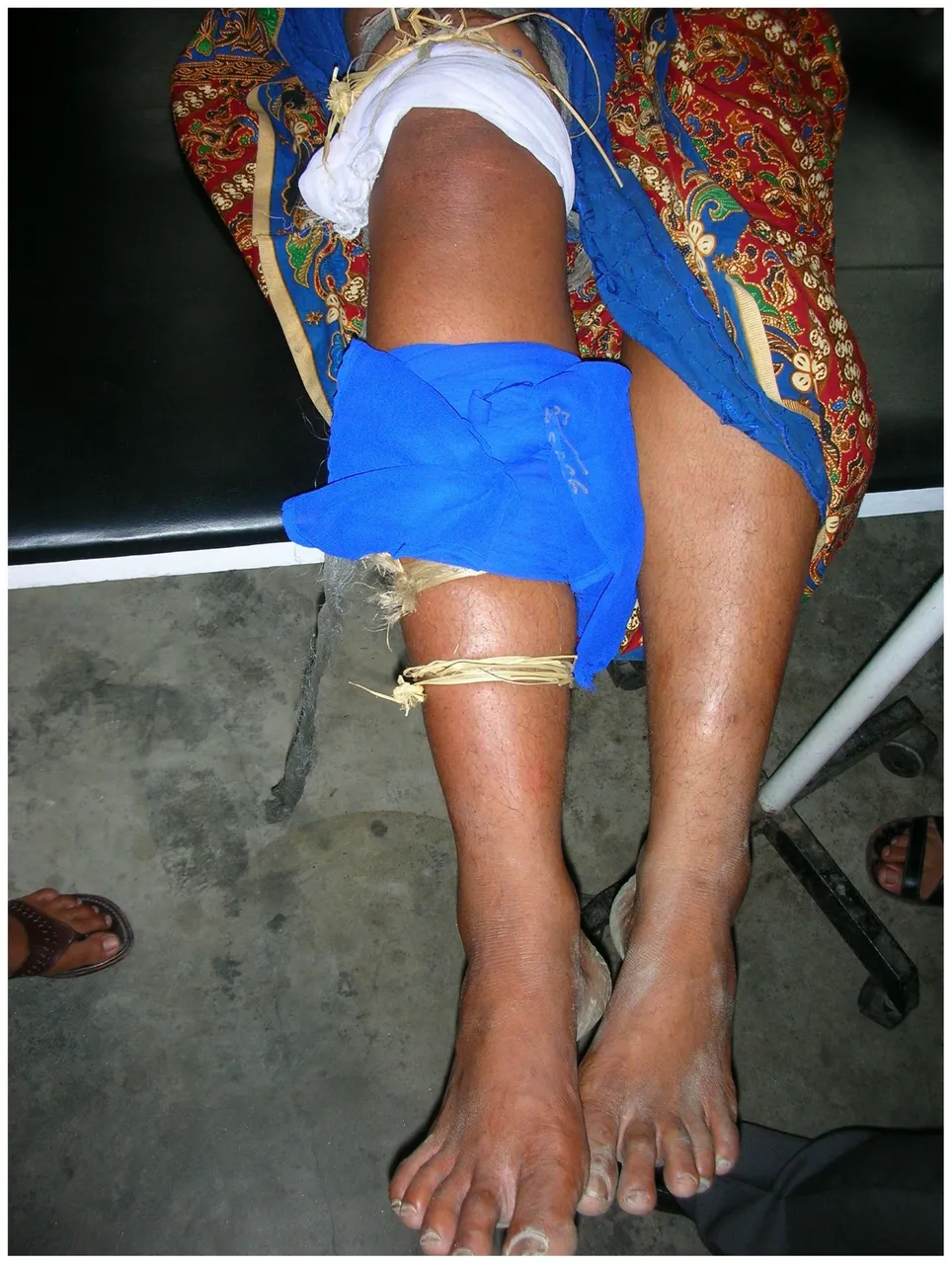
By Deepugn - Own work, CC BY-SA 4.0, Wikimedia
Snakebite comes with a lot of fear and anxiety which triggers many persons to do all sorts of things to manage the bite. While some people do the right things, many others take the wrong steps which further puts the victim into more problems than the snake bite itself.
Recently we had a young boy who was rushed into our facility with severe anemia (shortage of blood), fainting episodes, and features of hypovolemic shock. It all started when the boy had a snake bite on his leg in the bush where they were cutting timbers.
He was immediately rushed to a herbal home of a man who they claimed was renowned for handling snake bites. The herbalist used a razor blade to make several incisions at the site of the site to allow the blood to flow out. According to the patient's relatives, the man told them that as the blood is flowing out from the site of the snake bite, the snake venom will also flow out with it and the boy will be fine.
They left the blood flowing for some time after which the blood was supposed to stop. But it continued flowing. Unknowingly to the man, he had cut a blood vessel in his leg which was why the blood continued flowing. The herbalist, who didn't have a good knowledge of what was happening then covered the site of the incisions with a black powdered substance and discharged them with the assurance that the blood flow will stop.
The black powder succeeded in hiding the blood flow for a while but blood was still sipping out gradually. This continued for some days until one night when the boy went out to urinate and suddenly collapsed. They now rushed him to the hospital.
On arrival, the boy was looking markedly pale and dehydrated. After resuscitation, we quickly checked his blood level (urgent PCV) and it was 21%. We had to commence a blood transfusion and other management measures to save him.
From here, you can see how this boy would have just died, not primarily from the snake bite, but from the wrong steps taken after the snake bite. So in this post, I will give a general overview of snake bite and the right and wrong things to do when it happens.
OVERVIEW OF SNAKE BITE
Snakes are reptiles found everywhere in the world except for Antarctica and a few other countries. There are thousands of species of snakes, but interestingly, only about 15% of them are dangerous. The rest do not cause any known harm to the victim.

By AfroBrazilian - Own work, CC BY-SA 4.0, Wikimedia
Snake bites occur more commonly in rural areas and especially at night. Those at increased risk of snake bites include fishermen, hunters, farmers, herdsmen, snake charmers, herpetologists, those living in poor and low income countries with poor housing structures, etc.
According to the World Health Organisation,
About 4.5–5.4 million people get bitten by snakes annually. Of this, 1.8–2.7 million develop clinical illness and 81 000 to 138 000 die from complications.
It is important to note here that many snakes are non-venomous. What it means is that they don't have the glands and fangs to produce venom to attack the victim. Venom is the poisonous liquid produced by the venom glands which the snake uses to kill its prey or to defend itself. So the non-venomous snakes do not produce venom and are therefore not harmful.
The venomous snakes on the other hand produce poisonous substances (venom) which they inject into the victim to kill the prey or for self-defense when threatened.
Some of the venomous snakes include vipers, adders, sea snakes, cobras, mambas, vine snakes, boomslangs, etc. In our environment, the commonest venomous snakes are the carpet vipers, puff adders, and black-necked spitting cobra.
Even among these venomous snakes, it is not every bite by the venomous snakes that lead to the transmission of venom into the body. About 50% of bites from venomous snakes do not inject venom into the body. This is called a dry bite.
When the snake venom is injected into the body, they act in so many ways depending on the specie of the snake and the type of venom.
For some species like carpet vipers and vine snakes, their venom causes uncontrolled bleeding in the victim. There is bleeding from the gums, the mouth, the anus, and other orifices.
Venom from puff adders and spitting cobras cause damage to the body cells and tissues. They cause swelling, pain, redness, and decay at the site of the bite.
For the green mambas and berg adder, their venoms damage the nerves and cause paralysis, dropping of the eyelid (ptosis), vomiting, etc. Venom from yellow-bellied sea snake cause damage to the muscle cells and they present with serious muscle pain, paralysis, etc.
So the signs and symptoms of snake bite depend on the specie of snake and the type of venom. But generally, snake bite comes with intense fear, anxiety, pain, vomiting, swelling, increased heart rate, etc.
So let's look at the right and wrong things to do when a snake bite occurs.
THE DON'TS OF SNAKE BITE
- Do not use a tight tourniquet
The initial response to a snake bite is usually to tie above the bite so that the venom does not migrate upwards. However, this can be dangerous when tied so tightly as it will block the blood supply to the affected limb leading to ischemia and gangrene (death of that part of the body) when tied for a long time.

By Alirol E, Sharma S, Bawaskar H, Kuch U, Chappuis F, CC BY 3.0, Wikimedia
Do not use razors or knives to cut at the site
This is another dangerous response to snake bite which most times leads to serious complications or even death as we saw in the case of the young man above.Do not suck out the venom from the site of the bite
Some persons attempt to suck the wound with their mouth in an attempt to suck out the venom. This is a risky practice and does not work.Do not apply herbal concoctions
Herbal concoctions can predispose to kidney or liver damage and are not the right treatment for snake bites.Do not use black snake stones or electric shocks.
These methods have not proven to be effective in the treatment of snake bites.
THE DO'S OF SNAKEBITE
Immediately a snake bite occurs, the following are the right steps to take;
Immobilise the affected limb
The first right thing to do in the case of a snake bite is to restrict the movement of the limb. This can be done using a splint and a bandage to hold the splint or a clot to hold the splint. In doing this, care must be taken not to compromise the blood supply to the affected part.Reassure the patient
As we have stated earlier, only 15% of snake bites are venomous. So about 70 - 85% of snake bites do not transfer any venom and don't do any harm to the victim. Even among the venomous snakes, about 50% of the bites are dry bites and do not inject venom into the body.
So there is a need to reassure the patient to allay the fears and anxiety. It is this fear and anxiety that push people to do the wrong things like using razor blades to cut the site of the bite.
Take note of the type of snake if it's still there or possibly take a picture of it so you can show it to the doctor in the hospital. It will help the doctor to know the specie of snake and the possible type of venom if it is a venomous snake.
Move the patient to the hospital immediately
Contrary to some people's belief that snake bite is not a hospital affair, the hospital is the best-proven place to get effective treatment for snake bite. There are available anti-venoms that have shown to be very effective in treating snake bites.
Treatment: Hospital treatment of snake bite involves careful monitoring, supportive care, and symptomatic treatment of fever, vomiting, diarrhea, pain, bleeding, etc. And the use of anti-venom when indicated.
PREVENTION
Some measures can be employed to prevent a snake bite. Some of these include;
Wearing of cover boots and hand gloves especially for farmers. Those who move at night in snake endemic areas should also wear protective foot wears.
Do not put your hand into holes, especially during hunting. Also, be careful while putting your hands into packed woods or climbing trees.
Always move with a bright light at night and avoid walking across lawns or bushy areas.

By Bobjgalindo - Own work, CC BY-SA 4.0, Wikimedia
In conclusion, snake bites occur almost worldwide. Bites occur more on the legs and hands and mostly at night. Most bites are from non-venomous snakes but fear and anxiety lead to so many dangerous actions. Therefore, there is a need to reassure the victim and do the right thing by immobilizing the leg and rushing the victim to the hospital.
Snakes bite mostly when attacked or provoked. Therefore, be careful not to attack or provoke them. Always wear protective footwear and move with a bright light at night.
Thanks for reading.
For references and further reading, please check the resources below: